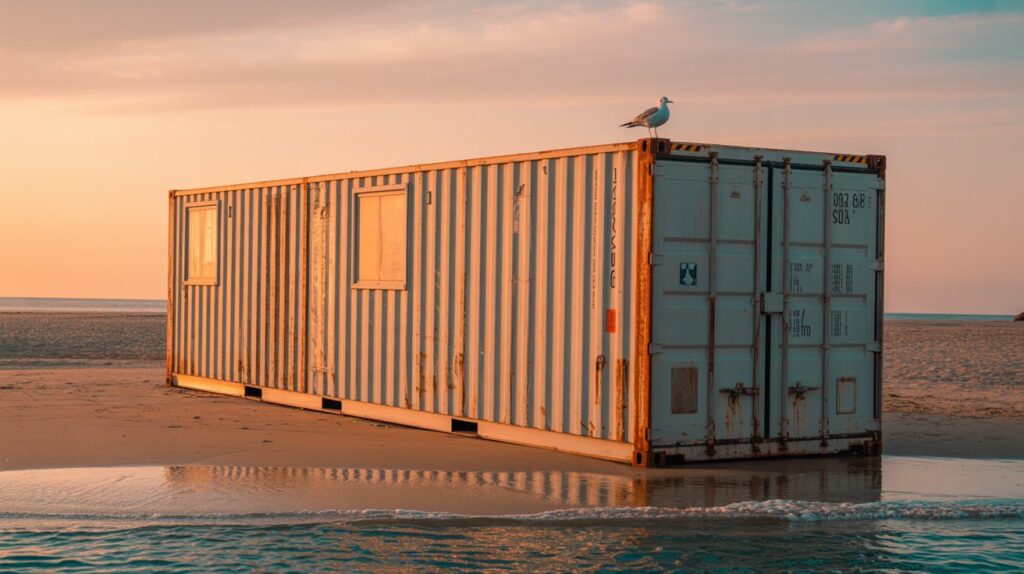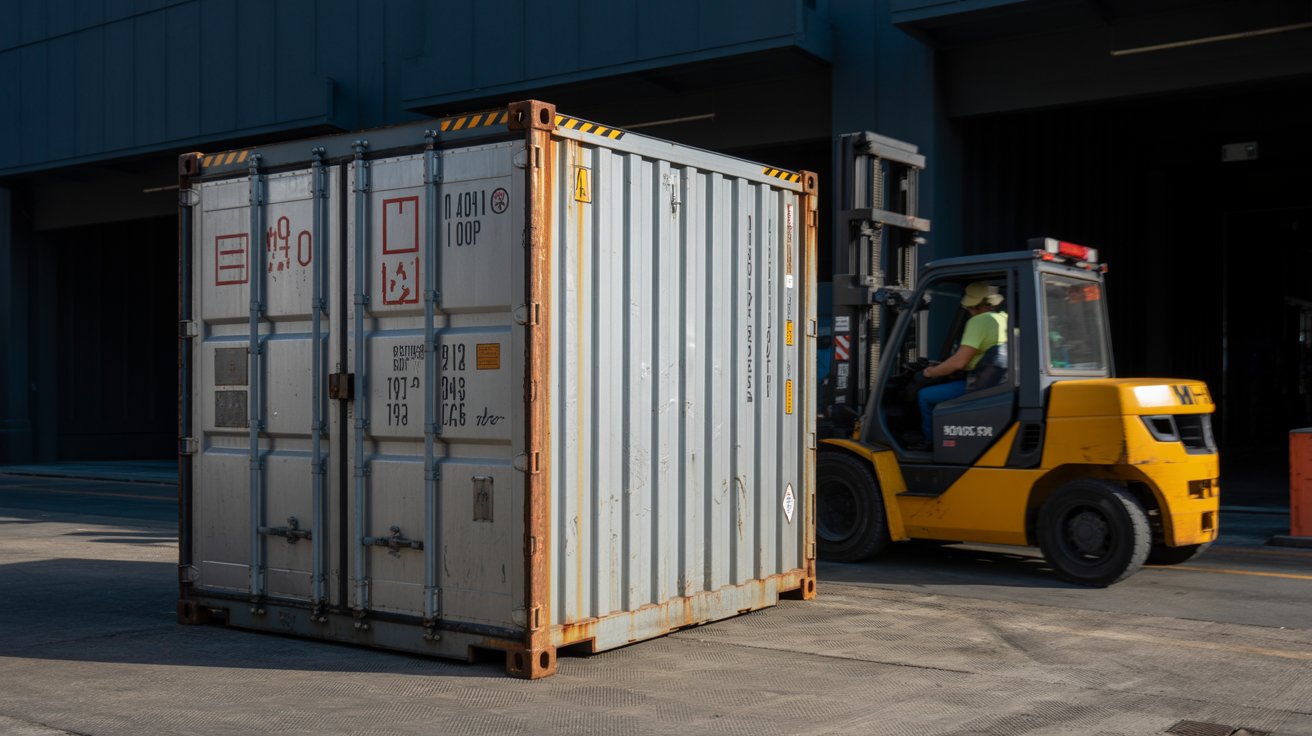Have you ever wondered what truly goes into choosing the right material for building shipping containers? Considering the numerous journeys these robust structures endure, the selection of materials is crucial to ensure durability, safety, and efficiency. While steel has traditionally been the go-to choice, aluminium is increasingly being seen as a promising alternative. Let’s delve into the possibilities and benefits of using aluminium in the construction of shipping containers.
Why Consider Aluminium for Shipping Containers?
When it comes to choosing materials for shipping containers, the first thought that might pop into one’s head is “why not aluminium?” With its lightweight properties and resistance to corrosion, aluminium offers a number of advantages over traditional steel. It makes sense to explore the potential benefits and limitations of this material to understand whether it could redefine the future of shipping industries.
Lightweight Nature
One of the primary reasons aluminium is gaining attention is its lightweight nature. Being approximately one-third the weight of steel, aluminium helps in reducing the overall weight of shipping containers. How does this benefit you? Essentially, a lighter container means more goods can be transported without breaching weight restrictions, ultimately leading to reduced shipping costs.
Corrosion Resistance
Unlike steel, aluminium doesn’t rust. This makes it an ideal candidate for shipping containers that are exposed to the harsh marine environment. The sea air, which is laden with salt, can quickly corrode steel containers, potentially leading to increased maintenance costs and a shorter lifespan. In contrast, aluminium, with its natural corrosion-resistant properties, offers a longer-lasting alternative, ensuring that your goods remain protected over long distances.
Environmental Impact
In today’s world, sustainability is a major consideration in material selection. Aluminium is highly recyclable, and its production process has drastically improved over the years to become more energy-efficient. Using aluminium containers could support the global push towards environmentally friendly practices while maintaining robust trade and transport activities.
The Technical Aspects of Aluminium
Understanding the technical nuances of aluminium as a material is crucial if you are to truly appreciate its potential in shipping container construction. Let’s break down the key technical aspects that make aluminium a viable material.
Strength-to-Weight Ratio
Aluminium boasts a high strength-to-weight ratio, which is why it is often used in aerospace and automotive industries. This factor is critical when it comes to shipping containers, as they must endure significant weight and pressure without buckling. Aluminium’s ability to maintain structural integrity while being lightweight makes it a strong contender for this application.
Thermal Conductivity
Another technical feature of aluminium is its high thermal conductivity. While this might raise some concerns about temperature control within the containers, innovative designs and insulating materials can overcome these challenges, ensuring that temperature-sensitive goods are transported safely.

Challenges in Using Aluminium for Shipping Containers
While aluminium certainly sounds promising, it’s equally important to understand the potential drawbacks or challenges it might pose. After all, no material is perfect, and balanced insight allows for better decision-making.
Cost Considerations
Aluminium tends to be more expensive than traditional steel, both in terms of raw materials and manufacturing processes. While the long-term benefits like reduced maintenance and fuel efficiency can offset these costs, the initial investment could be a barrier for some industries.
Structural Concerns
Though aluminium is durable and strong, it doesn’t match steel’s toughness. It can dent and deform more easily upon impact. Addressing this issue would require additional engineering solutions, such as reinforced designs or thicker panels, which can contribute to higher costs and complexity.
Comparing Aluminium and Steel: A Side-by-Side Look
To clearly understand the differences between aluminium and steel, let’s review a comparison of these two materials in the context of shipping containers.
| Feature | Aluminium | Steel |
|---|---|---|
| Weight | Lightweight | Heavier |
| Corrosion Resistance | Highly resistant | Prone to rust |
| Cost | Higher initial cost | Generally lower |
| Recyclability | Highly recyclable | Recyclable, but not as efficient |
| Structural Strength | High strength-to-weight ratio | Strong and tough |
| Maintenance | Lower maintenance needs | Higher maintenance due to rust |
Real-Life Applications and Success Stories
Across the globe, various industries are exploring the successful implementation of aluminium containers in logistics chains. It’s fascinating to look at real-life examples to see what aluminium can do in practice, providing a practical glimpse into its utility.
Case Study: The Beverage Industry
The beverage industry has long used aluminium for cans due to its properties of being lightweight and corrosion-free. Now, major beverage companies are extending this practice to shipping containers to improve logistics efficiency and reduce transportation costs.
Automobile Industry and Beyond
The automobile industry is another sector that has benefited from aluminium’s properties. Companies exporting high-value vehicles and parts often prefer aluminium containers to ensure maximum protection against environmental hazards. By using aluminium, not only is the weight of the cargo reduced, but additional protection against corrosion during long sea journeys is assured.
Future Prospects: Aluminium Shipping Containers
What does the future hold for aluminium shipping containers? If trends in technology and sustainability are anything to go by, aluminium might increasingly become a material of choice for shipping industries.
Innovation and Research
With ongoing research into improving aluminium alloys for greater strength and reduced production cost, the future looks promising. Innovations in composite materials that combine aluminium with other elements could offer even better performance without sacrificing the advantages already discussed.
Renewable Energy Shipping
With the booming renewable energy industry, shipping solar panels, wind turbines, and other sustainable equipment is anticipated to be a growing requirement. Aluminium’s lightweight and protective qualities make it potentially ideal for shipping such delicate and valuable goods.
A Sustainable Trend
As society continues to trend towards sustainability, the pressure on businesses to utilize recyclable materials will only grow. Aluminium fits well into this paradigm, reinforcing its attractiveness for future shipping solutions.
Conclusion
In essence, aluminium has much to offer in the realm of shipping container construction. Its lightweight, corrosion resistance, and high recyclability are compelling arguments for its use. However, weighing the initial financial outlays against long-term benefits is crucial for stakeholders considering this transition. As with any material, the choice to use aluminium must align with your specific needs and circumstances. Whether or not aluminium will overtake steel remains to be seen, but its potential in creating a more efficient, sustainable shipping framework is undeniable. The flexibility and commitment to research will ultimately dictate how quickly and widely aluminium shipping containers become prevalent. For those ready to explore new material frontiers, aluminium represents an exciting opportunity to innovate.

